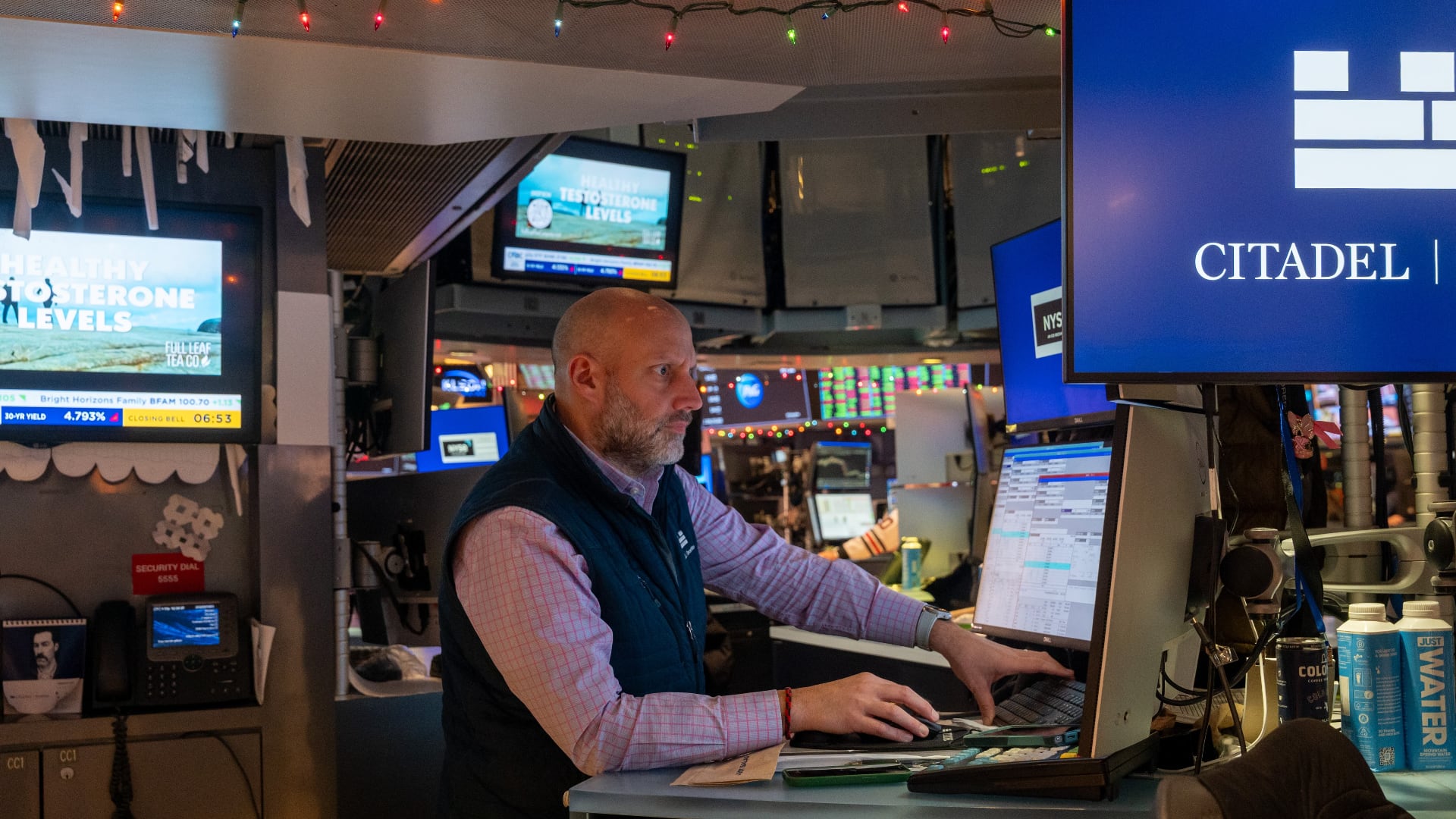With the election heating up, Kamala Harris and Donald Trump unveiled their economic plans should they win the election. Harris is proposing an economic activist’s dream of building a foundation for growth that would invest in the economy. Plus, it would send more money from the top 1% down to the bottom half of the economic ladder with the help of a $6,000 tax credit for each newborn kid and $3,600 a year until they turn 18. Meanwhile, Trump’s running mate JD Vance proposed giving parents a $5,000 credit for newborns, and an extra vote for each kid they have.
On taxes, Harris would raise corporate income taxes to 28% and cut down on offshoring revenue to tax havens like Ireland. Trump wants to extend his 2017 tax cuts, which are due to expire next year. Harris wants to raise taxes only on those earning $400,000 or more. Both of them want to end taxes on tips (but Trump said it first). Harris is talking about rebuilding U.S. manufacturing with a Biden-designed 10% tariff on all Chinese goods. Trump’s 60% proposed tariff would cut average household income by $1,800 and jumpstart inflation — it’s a too-big-to-succeed plan.
Harris wants to crack down on price gouging. Though she has released few specifics, the plan likely relies on trust-busting: lowering prices, innovating, and fostering competition by breaking up the increasingly concentrated U.S. food and food-processing industry. She also wants to solve the U.S. housing crisis, planning to build 3 million homes and offer first-time homebuyers a $25,000 down payment.
Trump’s other big promise? Pay off the national debt, now $35 trillion, to which he added nearly $8 trillion while he was president. How’s it all gonna play out? As Andrew Lutz of the Bipartisan Policy Center told CNBC, “There’s a gulf between the political rhetoric around the 2017 tax law and the policy reality that both parties are going to face next year.” Or as George H.W. Bush famously said “Read my lips.”
Get Big Business This Week in your inbox every week—and read it before everybody else! Sign up today.
The Usual Suspects
- Elon’s world: Elon Musk must lift the curtain on the secret corporate and financial structure behind X Holdings, which owns the X platform and X.ai, a federal judge in California has ruled. “It’s important that the public knows who owns the platform, who might influence its governance, and who Musk owes,” said Jacob Silverman, a journalist whose brief convinced a judge to open the records. The EU handed Tesla a nice present cutting its tariff on China-made Tesla EVs to 9% from 20.8%, as part of a review that looked at Chinese subsidies to foreign carmakers. That hasn’t stopped Musk from foreclosing on Willy Wonka’s home — I mean, the home of actor Gene Wilder. Musk sold it to Wilder’s nephew along with a $6.7 million mortgage. Now Musk is foreclosing, and the nephew listed the Bel-Air house for $13 million; Meanwhile the CEO of Tesla mini-rival Lucid, Peter Rawlinson, is taunting Musk. He said, “Clearly we have the best technology in the world. We’ve now taken the mantle from Tesla.” Lucid expects to deliver 9,000 cars this year; Tesla delivered 444,000 cars in the second quarter of this year. In robotaxi land, Waymo now has 100,000 driverless robotaxi rides a week, while Tesla hasn’t yet launched its model. Tesla is delivering Cybertrucks to customers covered in dirt and full of trash, apparently due to both the way Tesla delivers its cars and also to its unique design making it harder to clean, partly because the stainless-steel surface attracts spots and fingerprints.
- Shopping mauled: Macy’s said the economic uncertainty and post-pandemic spending hangover are hurting, with sales down 4% in the second quarter. On the contrary, discount chains Target and TJ Maxx saw sales rise 2% and 4% in the quarter, year-on-year. What’s going on? It’s not a recession, but as Macy’s CFO Adrian Mitchell said on a conference call with analysts, “The context that we are operating under is a consumer that’s really oriented on value.”
- It’s the Benjamins, Ford: Speaking of value-oriented consumers, no one wants to pay for Ford’s pricey EVs, so the Detroit original is putting its efforts into hybrids instead. After losing $2.5 billion on EVs so far this year, Ford is mothballing plans for an E-SUV. They still plan on introducing a new electric delivery van in 2026 and an medium-sized EV pickup in 2027.
- Boeing’s sartorial spaceship blues: The saga of the Boeing astronauts stuck in space has a new wrinkle — literally. With its capsule not considered safe enough to bring Suni Williams and Butch Wilmore home, Boeing plans to hail a SpaceX Uber. The only problem: Boeing spacesuits aren’t compatible with the SpaceX capsule, resulting from NASA encouraging competition among contractors. Additionally, Boeing’s got a new airplane problem with the 777-9, a long-delayed, long-haul plane that can carry 426 passengers more than 8,000 miles. Boeing said this week that engineers found a structural problem with the engine housing. There’s no word yet on whether that snafu will push out the current 2025 delivery date for the plane.
- Chipping away at China: The federal government agreed to give Texas Instruments a grant of up to $1.6 billion to jumpstart construction of three chip factories in the U.S., including two in Texas and one in Utah. TI says it will spend up to $18 billion on the plants as the Biden administration works to re-shore chipmaking.
The (Job)Less I Know, the Better?
Thought you were getting a paycheck? Think again. Well, that’s what happened to 818,000 Americans — in theory. It turns out that early data on how many jobs the U.S. economy created in the 12 months ending this March was off by that many jobs. That indicates employers added about 174,000 jobs a month, 28% fewer jobs per month on average than initially assumed. How does this happen? Mainly because it takes time to collect and process data. Initial reports are based on surveys, but once the data from state unemployment offices comes in, the numbers always get tweaked. While the jobs report surveys nearly 120,000 businesses each month, corporate enthusiasm for filling out these forms is dropping. Over the past decade, annual updates have subtracted an average 173,000 jobs a month. That suggests the job market may not be so robust after all, and that the 4.3 percent unemployment rate — a historically low number — may be rising again. In turn, the market puts pressure on the Fed and its chair Jerome Powell to lower interest rates in order to boost the economy and make it easier for companies to borrow (and hire). Interestingly, for all the theoretically unemployed people out there, the stock market stayed roughly even after the revision was announced.
Paramount’s Dance of the Nepo-Moguls
The quest for ownership of CBS-parent Paramount seems to have more episodes than CSI. After Paramount’s controlling shareholder and nepo-mogul Shari Redstone (whose late dad, mega-mogul Sumner Redstone built the Paramount conglomerate) thought she’d sold the company to Skydance, a smaller studio owned by nepo-mogul David Ellison (the son of Oracle founder and bazillionaire Larry Ellison). Now, nepo-mogul Edgar Bronfman (whose family built Seagrams into an alcoholic beverage colossus) is making a spoiler bid for the studio. In July, Skydance agreed to buy out Redstone and other shareholders and recapitalize the company. But the deal, in which Skydance and its backers would put up roughly $8 billion, had a 45-day “go-shop” provision that allowed Paramount to seek a better offer. Now, the details are on the table. It’s a complex offer, because Paramount’s ownership structure — and the structure of its parent, National Amusements — give Redstone enormous clout. Bottom line, ordinary Paramount shareholders would get $17 a share under Bronfman’s offer, and $15 under Ellison’s offer. Ellison now has until Sept. 5 to revise his bid. Now, Paramount’s special committee of directors has to weigh the offers and propose which one to take. Shareholders will have the final vote. Until then, no one knows who dunnit.
Peter S. Green is a veteran reporter and editor who has spent more than two decades covering business and finance from Eastern Europe to New York City, and has worked for Bloomberg News, The New York Post, The New York Times and The Messenger. He lives in New York City and is always looking for the next big story.









